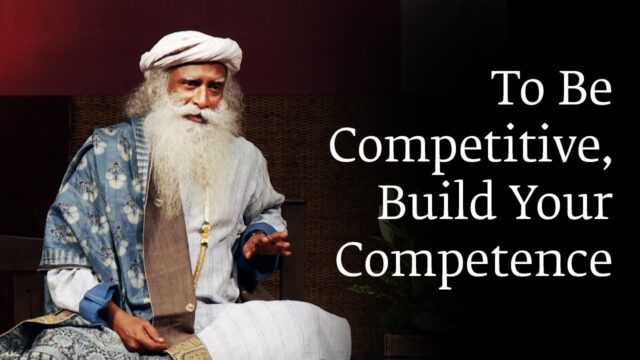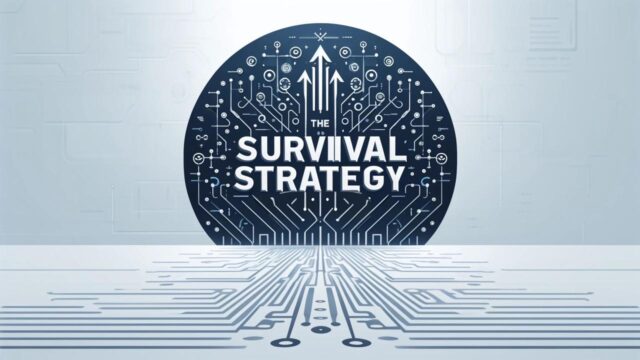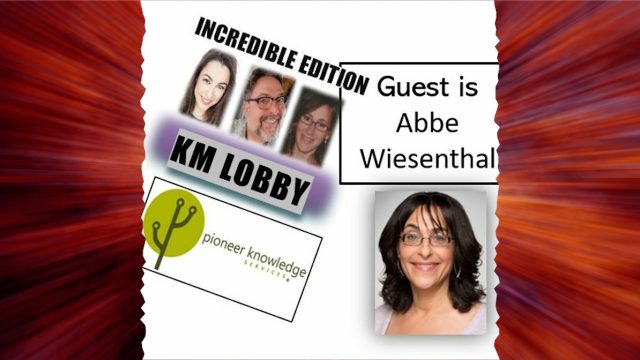
Analysis of knowledge management practices in e-commerce content operations
The advent of e-commerce has given rise to a whole new corporate paradigm. Prior to the introduction of e-commerce, consumers had to set an appointment to acquire goods or services, understand the product specifics ahead of time, and visit physical stores in person. In this case, the price and quality of the product have a significant influence on the transaction. In the area of electronic commerce, merchants and customers can share information over the Internet. In this case, the product market transforms into a knowledge market, with buyers and sellers taking on the roles of knowledge buyers and sellers. Instead of the product itself, the seller’s content operation—the process by which they create and distribute content—is now what drives the transaction.
Because even the best products must be promoted with excellent content for customers to understand and use them, content operations are critical in e-commerce operations. Few people are aware that the process of managing content also includes knowledge management (KM). We can greatly enhance the volume of transactions by improving the efficiency of content creation, collection, presentation, and dissemination through an appropriate KM strategy. So, how does KM fit into this process? Which strategies for KM are effective? Let’s look at each component of content operations together.
Step 1: Content collection
When performing e-commerce operations, our first objective is sales, and the primary purpose is to close transactions. As a result, we must first identify our target audience and the goals we intend to achieve through our content activities. Second, we must have a thorough understanding of the behaviors and preferences of our target audience. However, they are not easy to attain, and each option necessitates extensive market research. For example, how are you going to complete your market research study if you currently need content for a just-released rice cooker?
For newly listed rice cookers, the major purpose of content operations is to increase product visibility as quickly as feasible. Additional information is required to identify the intended user. You must conduct a thorough research of the present market condition, including how your product is priced. Is the appearance of the product appealing to a specific age group? Does the product have distinguishing features? Whether there are comparable competitive products on the market? … You must gather and analyze the fundamental data of the present product, such as market capacity, product performance, product price, and so on, and then add value to these cold facts by extracting the vital information behind the data. This information will help you plan the path of your future content activities.
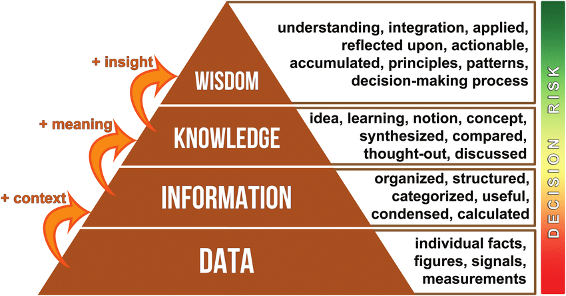
If you’ve been introduced to KM content, you’ll see that this is a true data-information-knowledge transfer1 (Figure 1). Effective KM strategies can help us collect and arrange data on target users, market trends, competitors, and product characteristics. For example, we can create a shared knowledge base that includes targeted user profiles, market research, competitor data, and industry trends. This enables content operations teams to access critical information at any time and modify it as needed.
Step 2: Content planning
Once the topic has been selected, the content must be carefully curated. To create an appealing content plan, we must integrate user wants, brand positioning, and market trends. We must also specify what we want to talk about, what information, in what form, and ultimately what goal we want to achieve. A good attraction programme can occur in anyone and in any situation, whether it’s a face-to-face conversation or social media connection. In this process, as many ideas and concepts as possible must be brought together, so fostering a culture of knowledge sharing within the team is critical. Members of all positions are allowed to share their ideas in this society, and no good idea goes unnoticed. KM tactics that encourage knowledge sharing include organising brainstorming sessions, establishing specialised knowledge cafés2 (Figure 2) in the office, and developing specialised information sharing platforms to facilitate the collection of ideas and new ideas. Simultaneously, establishing an effective information management system, which includes monitoring and evaluating the content effect, will aid in the strategy’s timely adjustment.

Step 3: Content presentation
Following content planning, the next step is content presentation and beautification. The goal of content presentation is to provide users a strong visual impact, which is essential for attracting users. This section can be understood as the process of converting tacit information into explicit knowledge. Meanwhile, according to Boisot’s I-Space Model of Knowledge3 (Figure 3), this process also involves the transformation of personal information into proprietary knowledge. The externalisation and sharing of knowledge is required for the translation of tacit knowledge into explicit knowledge, suggesting that implicit knowledge within an individual must be transformed into a form that can be documented, described, and communicated. At the content presentation stage, compelling headlines, great photos, and appealing typography are all critical success elements. For example, a designer may have a plethora of visual concepts, but these ideas are implicit in the head and difficult for others to understand and convey. However, when these concepts are converted into drawings, sketches, or designs, they become explicit knowledge that others can better understand and apply. Second, translating personal knowledge into proprietary information entails converting an individual’s personal experience and insights into proprietary knowledge within an organisation, which can significantly increase the impact and competitiveness of a product or brand.
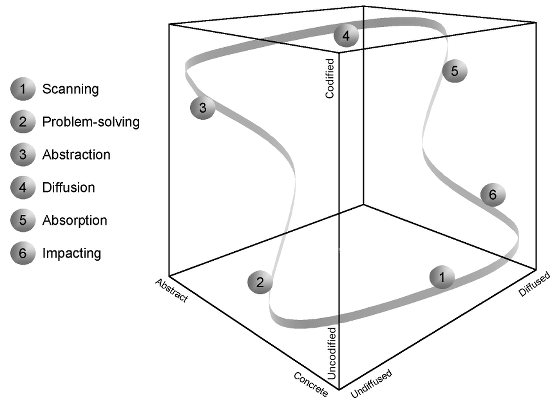
In the content presentation phase, in addition to carefully preparing the visual design principles (colour schemes, graphic layouts, and kinetic effects) to enhance the user’s sensory experience, the content’s interactivity should not be overlooked. For example, quizzes, click-through feedback, and social media sharing buttons can all help to increase user engagement. Implementing these KM solutions successfully expresses tacit knowledge and transforms human wisdom into business assets, laying the groundwork for improving brand image and market competitiveness.
Step 4: Content dissemination
Once the knowledge content has been encoded, content disseminators must disseminate this information to the target knowledge dissemination audience via the chosen knowledge dissemination channel (Figure 4). Choosing the correct distribution channel and promoting content fission are critical steps in this process, and KM can help you make better decisions.
For starters, KM may help you discover where your audience obtains their information and what their preferences are, allowing you to identify the most successful distribution channels. For example, if targeting younger users, social media platforms may be a better communication channel, whereas for professionals, industry forums or specialised websites may need to be considered. This targeted channel selection can be achieved through in-depth research into audience behaviors and preferences, maximising the effectiveness of information dissemination.
Secondly, the success of knowledge dissemination is closely linked to the timing of dissemination. KM can help companies understand when their audience is active and their online behaviors so that they can disseminate information at the best time. For example, if a restaurant online shop wants to promote their lunch specials, they can use a KM strategy to analyze their customers’ online activity during lunchtime hours and push relevant content at that point in time. This can significantly boost the visibility of your content and conversion rates.
Finally, a KM strategy also involves facilitating content fission, i.e., encouraging users to further share the content. By designing compelling content or offering attractive incentives, users’ willingness to participate and share can be stimulated, thereby expanding the reach of the content. For example, consider creating a content fission effect by organizing online events or launching interesting challenges to engage users and encourage them to share to their social networks.

Conclusion
Taken together, we can conclude that KM plays an indispensable role in content operations. By integrating, transmitting, analyzing, and sharing knowledge, the KM mechanism effectively releases the potential value of content, helping content e-commerce companies to better meet user needs, improve sales efficiency and realize the whole chain of content dissemination. This method not only improves the user experience but also boosts e-commerce sales. As a result, incorporating KM into the content operation plan not only aids in the shaping of influential content, but also improves the enterprise’s competitiveness and market positioning.
Content Operations is the set of processes, people, and technologies needed for strategically planning, creating, managing, and analyzing all content types for all channels across an enterprise4.
Article source: Adapted from Analysis of Knowledge Management Practices in E-commerce Content Operations, prepared as part of the requirements for completion of course KM6304 Knowledge Management Strategies and Policies in the Nanyang Technological University Singapore Master of Science in Knowledge Management (KM).

Header image source: Firmbee.com on Unsplash.
References:
- Ackoff, R. L. (1989). From Data to Wisdom. Journal of Applied Systems Analysis, 16, 3-9. ↩
- Sharma Management International. (n.d.). Knowledge Café Methodology. ↩
- Boisot, M. (1998). Knowledge Assets: Securing Competitive Advantage in the Information Economy. Oxford University Press. ↩
- Chapman, S. (2023, July 20). What Is Content Operations and Why Do You Need It? Aprimo Blogs. ↩

